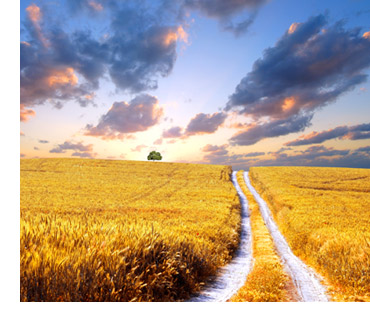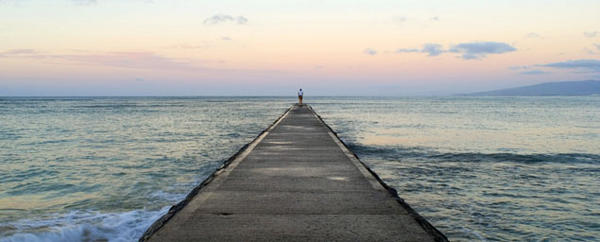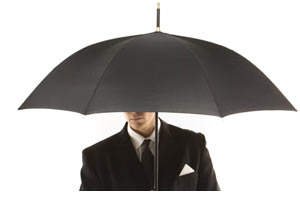 Considering Microstock? Here are a few things I say to anyone thinking about taking the microstock path to sell their images.
Considering Microstock? Here are a few things I say to anyone thinking about taking the microstock path to sell their images.
For a start you would not be reading this if you did not have a love of photography. Don't lose that love by becoming obsessed with sales stats and taking high selling stock shots. 'Do microstock' while you continue enjoying the style of photos you currently take. Images that sell on microstock are commercial style images; artistic photos also sell but not anything like as well as the commercial ones. The good sellers are typically ones that you have to set-up, but you can also find good sellers amongst those images you take on a 'day out with your camera' especially if you go out shooting with microstock in mind. You could be a photo journalist, landscape or portrait photographer (or a budding amateur) you can combine any of these with extra income from microstock.
Few (if any?) people dive straight into microstock full-time, almost all full-time microstock photographers spent time, sometimes a long time building up a portfolio of images which were selling before they made the 'leap' into full-time microstock. The vast majority of microstockers are quite happy working a couple of hours a week and earning some extra money.
Internet Diatribe
There is lots of clap-trap about microstock online, about it being good for students and various other groups of people. Microstock is no better for students than anyone else. Everyone benefits from flexibility and non fixed working hours or location. It's often described as a passive income, like writing, you earn after you have done the "work", but there is plenty of work to do, so the idea of taking a few hundred photos and making a fortune should go "out the window" right now.
The only way to really find out, sort the truth from the exaggeration, and discover how much money you will make at microstock is to sit-down and spend time doing it. It will cost you nothing but your (valuable) time. There is no doubt that people make money from microstock and that microstock agencies are a viable business model, there are a lot of bitter photographers out there who have not moved with the times and still expect to to make unreasonable amounts of royalty for photos which were easy to set-up. The stock photography landscape is changing and microstock is a significant and growing sector.
You will read countless articles arguing if microstock is good or bad for the industry. Your only concern is that it is good for you. User contributed photography is viable - bad articles are just cheap blogger tactics to get people reading something salacious about what is essentially a somewhat dull subject to write about. Microstock is not for the impatient, fortunately many photographers are patient people.
Don't take my word for it: many well respected and experienced long-term stock photographers have positive things to say about microstock, John Lund, has a thought provoking stock photography related blog. A recent article (April 2015) on lightstalking also sheds some light on myths and truths about microstock
Some questions to answer, Some things to think about...

Am I a good enough photographer?
You will learn. Microstock is a great way to get into the stock photography industry. The skill set for taking stock photos is as wide and varied as the subjects up for sale. Concentrate on what you know and enjoy. There is no need to be a professional photographer or even remotely experienced. Professionals can be disadvantaged by their expectations, and assumptions of what makes a good photo often differ from what sells well as microstock. Microstock sites provide learning materials and guides for new photographers, obviously you need some basic skills to begin with. The sites also provide feedback, even if you just look at your rejected photos you can see what may sell and what is unacceptable, as a bonus most agencies also let you know briefly why they rejected each image.
Do I have the time?
Your valuable time is the main investment you will make in microstock. If you are already 'time poor' then becoming a microstock photographer is not for you. However the main advantage of selling microstock is that there are no fixed hours, and your income is directly proportional to the amount of time you invest in taking pictures, keyword and uploading them. You can work a few hours a month, 20 minutes each day, or 9-5, 7 days a week if you like. Clearly if you only work for short hours you won't earn as much as someone working longer hours, working smarter and not harder is also vital. If you start submitting large numbers of images then one of your major concerns will be how to optimise your microstock workflow.
I like photography so therefore I will like microstock
Perhaps wrong. It depends on the type of photography you enjoy doing, I guess most people reading this enjoy their photography otherwise they would not do it (?) Personally I enjoy landscape and travel photography, and while these images do sell on microstock sites, you will also have to think about getting model releases signed if you photograph people, or spending time shooting table top subjects, directing for photo shoots of models and all the legwork that that involves. Before starting microstock don't just look at the popular photos at a microstock site and say 'well I could have taken that' actually sit down and act out in your head all of the things that you would need to do to create a photo just like it e.g. the microstock stereotype of an apple on a white background (an easy to photo subject and hence lots of photographers have taken similar). Imagine you are buying props (1x perfect looking apple), setting up lighting and a light tent or white background, setting up camera equipment and tripod or strobes, taking the photo, downloading, editing and key wording, uploading to a microstock site to earn a few dollars each month if you have done a good job. Are you prepared to do that? All those popular photos... someone has already done that so you will have to think of something new and original to stay ahead of the game, ready for the challenge?
Are you emotionally attached to your photos?
 It sounds a little stupid, but after 'bringing the photo into the world' you then find it and a whole load of other images are rejected by a reviewer who might just be having a bad day. It's a bitter pill to swallow, but you will need to be able to get over the rejection and not take it as some sort of personal insult. Nor will you be able to get upset if you see your image used in a lavish advertising campaign, knowing that you only earned a couple of dollars from that sale. The sun does not always smile on the microstock photographer, and despite what you might have read elsewhere being a microstocker is certainly not 'easy'.
It sounds a little stupid, but after 'bringing the photo into the world' you then find it and a whole load of other images are rejected by a reviewer who might just be having a bad day. It's a bitter pill to swallow, but you will need to be able to get over the rejection and not take it as some sort of personal insult. Nor will you be able to get upset if you see your image used in a lavish advertising campaign, knowing that you only earned a couple of dollars from that sale. The sun does not always smile on the microstock photographer, and despite what you might have read elsewhere being a microstocker is certainly not 'easy'.
Is my camera good enough?
The forums are full of people with camera fetishes, who obsess about noise filters, photoshop plugins, prime lenses, and while I tend to shoot with Nikon D700 and a selection of Nikon lenses, it's not impossible to use a cheaper consumer camera. The cheaper the camera the more work you will have to do reducing the size of images to get rid of noise and artefacts inherent to those cameras so in the long run a DSLR is recommended. I have and still do use an 8MP Olympus consumer point and shoot camera where I need to. A 'prosumer' compact style camera should be more than usable if not as flexible as a DSLR. More mega pixels is important, even if cheaper cameras produce images with more noise (noisy images are almost always rejected by microstock agencies) the extra megapixels allow you to downsize the images to reduce the noise. Smaller images are however less profitable than larger higher resolution ones which can sell for a higher price. Read more about cameras for microstock
Consider the Long Tail
Many people lose patience with microstock. (I did back in 2003, I saw little results in the first few months and didn't submit more for about 9 months) The earnings you will make in the first few months might well be quite pathetic, but those "dollars here and there" add up, you need to be in microstock for the long term. Working in microstock is often about long tail earnings, the images you take will be in your portfolio to sell in the future for at least several years. The time you spend uploading to each agency should pay itself back sooner or later leaving you with a steady stream in income for years to come. Agencies wax and wane, some will go out of business, so your income from each agency will not carry on forever but it should carry on for many years to come so long as the style or content of your images does not date too much. When judging how successful you are consider how much you enjoy the task, the flexibility and the long term income situation.
To some extent there is a 'microstock momentum'. Commissions at some agencies grow in tiers with more sales. The more images you have at each agency the more likely it is that someone will see not just one of your images, but from that image also click on another of your images or your profile/portfolio. Leading microstock photographers also create a brand (making a name for themselves) which adds extra cache to their photography and hence higher sales. Agencies use clever algorithms which display 'proven' images (popular / high sales) in search results, in some cases it can take a while for images to gain sales, in others they tail away over time.
Where now? Getting Started - An overview of our guides for beginners
Related Posts
Passing the Photographer Application Process
Recommended / High Earning Microstock Agencies



It's quiet in here! Add new comment